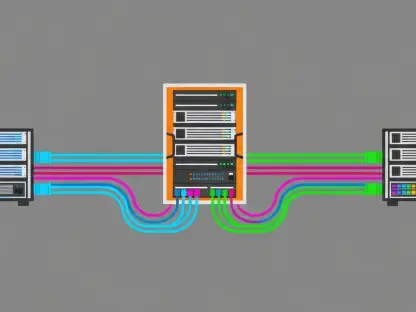In a stunning revelation that has rocked the foundations of national defense in Israel, recent reports have uncovered a staggering 30 espionage cases orchestrated by Iranian intelligence within the occupied territories, exposing a deeply sophisticated and dangerous infiltration of Israeli security networks. This alarming breach, involving nearly 50 individuals from diverse backgrounds, highlights the scale of a crisis targeting critical military and civilian infrastructure, igniting urgent discussions about vulnerabilities within Israeli society. Spanning a wide demographic spectrum, from teenagers to seniors and across ethnic lines, these cases underscore the pervasive reach of foreign operatives exploiting internal weaknesses. As the details unfold, the implications for national security grow increasingly dire, raising questions about how such extensive penetration could occur and what measures can effectively counter this growing threat.
Unveiling the Espionage Crisis
Scale and Diversity of Recruited Spies
The breadth of individuals entangled in these espionage activities is nothing short of staggering, painting a troubling picture of how Iranian intelligence has penetrated Israeli society. Ranging in age from as young as 13 to as old as 74, the spies hail from a variety of backgrounds, including Jewish, Arab, and Azerbaijani origins. This group also encompasses both secular and ultra-Orthodox (Haredi) communities, as well as male and female Israeli army officers. Such diversity reveals a calculated strategy by Iranian operatives to cast a wide net, targeting individuals regardless of their social or cultural standing. This approach highlights a critical vulnerability within Israel, where societal divisions and personal circumstances can be exploited to serve foreign interests. The sheer range of those recruited suggests that no segment of the population is immune to the allure or coercion of espionage, amplifying the challenge for security agencies tasked with safeguarding national integrity.
Delving deeper into this demographic spread, it becomes evident that Iranian intelligence has adeptly identified and leveraged personal weaknesses across these groups. For instance, teenagers may be drawn in by the promise of quick financial gain or ideological manipulation, while older individuals could be coerced through blackmail or desperation. The inclusion of army officers, who possess access to sensitive information, indicates a targeted effort to breach high-security echelons. This cross-sectional recruitment strategy not only maximizes the potential for intelligence gathering but also complicates detection efforts by Israeli authorities. The varied profiles of these spies—from community leaders to marginalized individuals—demonstrate how deeply embedded these networks are, creating a multifaceted threat that transcends traditional security paradigms and demands a comprehensive response to address both external and internal factors.
Sophistication of Intelligence Operations
The operations conducted by these spies are marked by a high degree of sophistication, focusing on some of Israel’s most critical assets. Targets include military bases, air defense systems, and vital infrastructure such as the Be’er Yaakov power plant. High-profile locations like the Nevatim Airbase, where intelligence reportedly facilitated Iranian missile strikes, and even Mossad buildings, have been under surveillance. This strategic focus on sensitive areas reveals the intent to undermine Israel’s defense capabilities at their core. The precision with which these targets are chosen suggests a deep understanding of Israeli security architecture, likely aided by insiders who provide detailed insights. The consequences of such breaches are profound, as they directly impact national safety and the ability to respond to external threats.
Equally concerning is the advanced technology employed in these espionage efforts, which amplifies their effectiveness and elusiveness. Tools such as 24-hour online cameras and coded location data enable remote monitoring and transmission of critical information with minimal risk of detection. These methods showcase a level of technical prowess that allows Iranian operatives to orchestrate complex operations from afar, reducing the need for physical presence and thus lowering the chances of interception. The integration of digital surveillance into espionage activities marks a significant evolution in tactics, challenging traditional counterintelligence measures. Israeli security forces now face the daunting task of not only identifying human operatives but also combating a digital battlefield where information can be leaked in real-time, necessitating urgent advancements in cybersecurity to protect against such sophisticated threats.
Driving Forces Behind Espionage
Economic and Social Motivations
A significant driver behind the willingness of individuals to engage in espionage for Iran lies in the economic hardships and societal divides prevalent within Israel. Financial struggles often push people into desperate situations, making them susceptible to offers of monetary compensation in exchange for sensitive information. A poignant example is Rafael and Leila Gulyayo, a couple from Lod who initially resisted high-risk missions but ultimately succumbed to financial pressures. Their story reflects a broader trend where economic instability becomes a gateway for foreign influence, turning ordinary citizens into unwitting participants in international conflicts. This exploitation of personal crises underscores a critical internal challenge for Israel, where addressing economic disparity could serve as a preventive measure against such security breaches.
Beyond individual financial woes, societal fragmentation plays a crucial role in creating fertile ground for recruitment by Iranian operatives. Deep-seated divides, whether based on ethnicity, religion, or socioeconomic status, foster feelings of alienation among certain groups, making them more receptive to external overtures. These divisions are not merely social issues but strategic vulnerabilities that foreign intelligence can exploit to build networks of spies. The case of the Gulyayo couple further illustrates how personal grievances or a sense of exclusion can be weaponized, as their economic plight likely compounded any existing dissatisfaction with their societal position. Tackling these root causes requires a multifaceted approach, combining economic support with efforts to bridge communal gaps, to diminish the appeal of espionage as a solution to personal struggles and reduce the risk of further infiltration.
Role of Cyberspace in Recruitment
The advent of cyberspace as a recruitment tool has revolutionized the way Iranian intelligence approaches potential spies, adding a layer of complexity to the espionage landscape. Social networks and online platforms provide a low-risk avenue for operatives to identify and contact individuals without the need for physical interaction. This digital method allows for discreet communication, often under the guise of innocuous online exchanges, making it challenging for Israeli security to detect initial contact. The ability to operate remotely not only protects the anonymity of recruiters but also expands their reach, enabling them to target a broader pool of candidates across geographic and social boundaries. This shift to virtual engagement represents a significant hurdle for traditional intelligence-gathering methods, necessitating a reevaluation of how threats are monitored in the digital age.
Moreover, the use of cyberspace in espionage recruitment exacerbates the difficulty of prevention and intervention by Israeli authorities. Encrypted messaging apps and anonymous profiles create a veil of secrecy that can shield illicit activities for extended periods. Once contact is established, operatives can groom potential spies through prolonged online interactions, building trust and manipulating vulnerabilities without ever meeting face-to-face. This prolonged undetected engagement was evident in cases where networks operated for years before discovery, highlighting the stealth of digital recruitment. As a result, Israeli security must prioritize the development of advanced cyber-monitoring capabilities and collaborate with tech experts to track suspicious online behavior. Strengthening digital defenses is imperative to counter this invisible front of espionage, where the battlefield extends beyond physical borders into the vast expanse of the internet.
High-Profile Cases and Israeli Response
Notable Espionage Incidents
Among the numerous espionage cases uncovered, certain incidents stand out for their audacity and the depth of infiltration they represent. The story of Moti Maman, often compared to a dramatic Hollywood movie, encapsulates the boldness with which Iranian intelligence operates. His involvement in leaking sensitive information reveals not only personal betrayal but also the intricate planning behind such operations. Similarly, the case of seven spies of Azerbaijani origin, who managed to remain undetected for two years, underscores the long-term nature of these espionage networks. Their ability to operate under the radar for such an extended period points to sophisticated methods of concealment and communication, posing a severe challenge to Israeli counterintelligence efforts. These high-profile cases serve as stark reminders of the persistent and evolving threat that foreign intelligence poses to national security.
Further examination of these incidents reveals the strategic patience and resourcefulness of Iranian operatives in building their networks. The Azerbaijani-origin spy ring, for instance, likely relied on cultural or linguistic ties to blend into Israeli society, avoiding suspicion while gathering critical intelligence. Meanwhile, Moti Maman’s dramatic narrative suggests a level of personal manipulation or coercion that turned an individual into a conduit for sensitive data. These examples illustrate how Iranian intelligence tailors its approach to exploit specific vulnerabilities, whether through ideological alignment or personal gain. The impact of such cases extends beyond the immediate security breaches, as they erode public trust in national defense mechanisms and highlight the need for more robust vetting and surveillance of potential insider threats within Israel’s borders.
Security and Legal Countermeasures
In response to the alarming rise in espionage activities, Israeli authorities have mobilized significant resources to curb the threat, involving key agencies like the Israel Security Agency (Shabak) and the Lahav 433 Unit of the Israeli Police. These bodies have conducted extensive operations to detain and interrogate suspects, aiming to dismantle the networks facilitating Iranian intelligence gathering. The rigorous approach taken by these agencies reflects the gravity of the situation, as each uncovered spy represents a potential leak of information critical to national defense. The focus on swift apprehension and thorough investigation aims to send a clear message that such activities will not be tolerated, while also seeking to uncover the full extent of foreign infiltration. This proactive stance is essential in a landscape where espionage tactics continue to evolve, demanding constant vigilance and adaptation from security forces.
Complementing these operational efforts, the Israeli judiciary has adopted a severe stance to deter future espionage, with penalties as extreme as the death penalty being considered for some defendants. The case of Rafael and Leila Gulyayo, among others, exemplifies this harsh legal response, driven by the profound impact of the intelligence they shared with Iran. Such stringent measures underscore the existential threat perceived by Israeli officials, where the leakage of strategic information could directly endanger lives and national stability. This punitive approach, while controversial, aims to reinforce the consequences of betrayal and discourage potential collaborators. However, it also raises questions about addressing underlying societal issues that lead to such actions, suggesting that a balance between punishment and prevention through social reforms could be crucial in mitigating future risks of espionage within Israel.
Reflecting on a Persistent Threat
Looking back, the wave of espionage cases driven by Iranian intelligence paints a sobering picture of vulnerability within Israeli security frameworks. The intricate operations, fueled by economic despair and societal rifts, have exposed critical gaps that foreign entities exploit with alarming precision. The dramatic narratives of individuals like Moti Maman and long-standing undetected networks reveal just how deeply these threats have embedded themselves. Moving forward, a dual focus on enhancing digital defenses against cyber recruitment and addressing internal disparities could prove vital. Strengthening community resilience through economic support and social integration might reduce the appeal of espionage, while advanced cyber-monitoring could intercept virtual threats before they materialize. As Israel navigates this complex challenge, international cooperation and intelligence-sharing emerge as key strategies to bolster defenses, ensuring that such infiltrations are not only countered but prevented in the years ahead.









